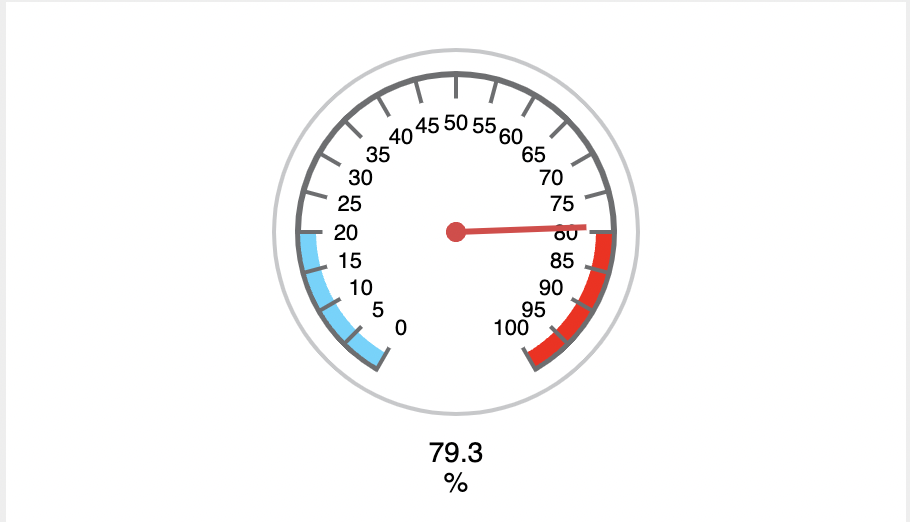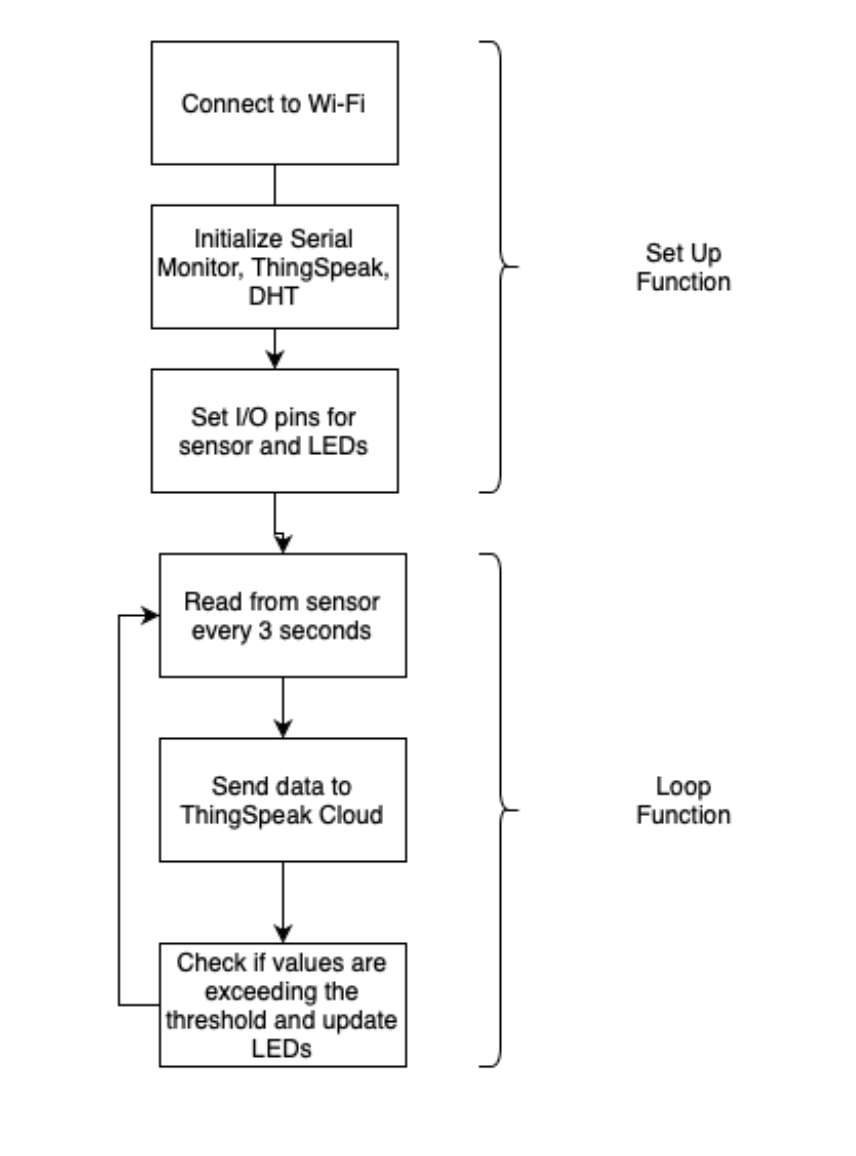Experiments done as part of Introduction to Internet of Things course, using Arduino and NodeMCU boards.
The project consists of a fully functional, end-to-end temperature and humidity monitoring system, equipped with cloud-based regular trend analyis and visual alerts whenever the temperature or humidity values exceed a particular threshold value.
This set up can be used for monitoring the temperature and humidity of a dynamic environment with extremely small, fast-paced changes in the temperature and humidity of the surroundings. Additionally, it can also be used to analyze trends in temperature and humidity via graphs that are computed and stored on the cloud to transfer computational power. Additionally, visual gauge representations enable users to view the current values on a scale that indicates values that are too high, too low, or moderate. When the temperature exceeds a certain threshold value, in this case 30, we light up the green LED and turn it off when the temperature is below it. Similarly for humidity, if it is greater than 80% we turn on the red LED, otherwise we turn it off. The values for both are formatted and printed on serial monitor for easy viewing and understanding of trends. Since the sensitivity of a DHT22 sensor is very high and the values have less fluctuation and greater accuracy, this system can be used to analyze very small changes in the values as well.
Report.md: Contains the report and information for the project.code.ino: Contains the Arduino IDE code to be dumped on the ESP32 board in order to run the program. The Wi-Fi SSID and Password need to be changed by users along with the writeAPIKey and ThingSpeak channel ID.video.mov: Contains the video which demonstrates the working of the detection system. This file can be found here.
The project makes use of a DHT22 sensor to detect changes in the temperature and humidity and send them through the input pin 27 to the ESP32 board, which uploads this data to the cloud. Additionally, a red and green LED are used to demonstrate crossing the threshold value for humidity and temperature respectively. Resistors are used to ensure the circuit functions as expected, along with wires and breadboards to integrate all the components together.
After connecting to Wi-Fi using Wifi.h, we set up other libraries like ThingSpeak and DHT, as well as setting baud rate and initiating communication with the Serial monitor. After this the most important step is to set up the digitalWrite pins and sensor input pins. After the set up is complete, we set a loop that runs every 3 seconds to take sensor readings, upload to ThingSpeak, and reflect the same in the LEDs connected to the ESP32 board. This continues until the code is terminated.
An IoT experiment to vary the orientation of the servo motor and blink an LED when an object is detected at less than 50 cm, using interrupts.
An interrupt is the process of forcing a microcontroller to suspend the current job and perform a higher priority job.
This experiment requires an Arduino Uno R3, an ultrasonic distance sensor, micro servo, 220 Ohms Resistor and Red LED.
We use an interrupt service routine (ISR) to rotate the servo motor to 90 degrees. We attach a pin for external interrupts and an outpin to the resistor.
The loop functions reads the distance using the readUltrasonicDistance function and convert to centimetres. I If the distance is less than 50 cm, trigger the interrupt by calling ISR.
An IoT experiment to vary motor speed and LED intensity using PWM (pulse width modulation).
The analog input from a potentiometer is used to control the speed of the motor.
The analogread() and analogwrite() functions were used to read potentiometer signals and writing PWM signals.
The potentiometer reading is read using analogread and divided by 4 before writing to the analog pins to ensure correct range is used.
An NPN transistor is used to amplify voltage so it can be scaled for the motor from 5V to 9V.
Ouput PWM signal is given to the base of the transistor and the new output comes from the emitter, which is connected to the terminal of the motor.


An experiment to control a servo motor using Thingspeak.com channel data.
An account was set up on Thingspeak to create a new channel. API keys were used to enter data into the channel.
The password and SSID were stored to start communication, and a Wi-Fi client was instantiated.
In the loop function, we kept connected to wifi and checked status, and continued to read from private channel.
If the status code of the information received was 200, the servo motor shaft was rotated by the value given.
Status code was read using ThingSpeak.getLastReadStatus().






